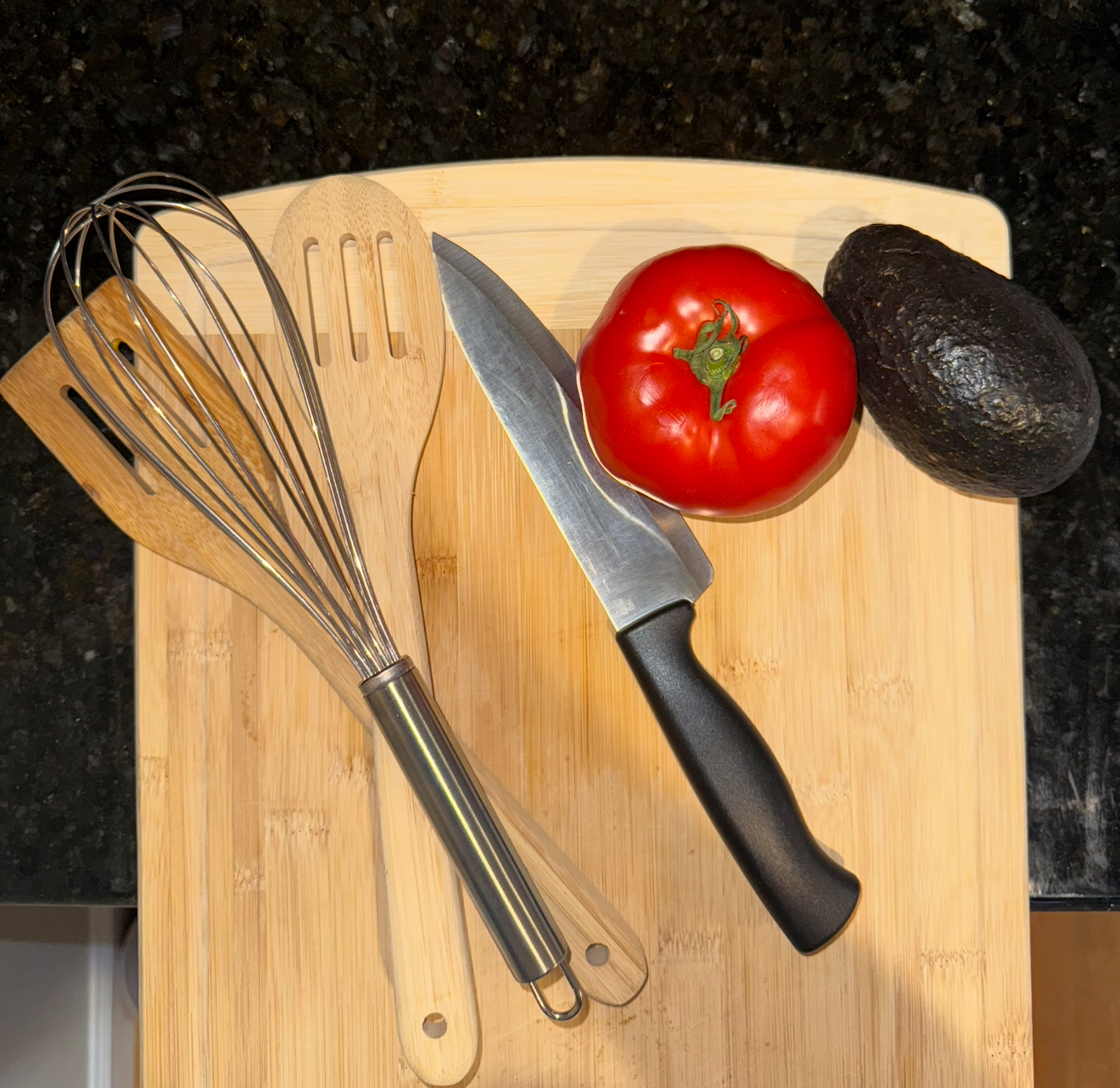Detoxing Your Kitchen (Without Breaking the Bank)
Let’s be real—this world feels like it’s gone a little wild. Everywhere you turn, there are chemicals, toxins, and ingredients we can’t even pronounce sneaking into our homes and onto our plates. It can feel overwhelming trying to keep up with it all. But I’ve realized something: I may not be able to control everything outside my home, but I can take steps to create a space inside that reflects the peace, wellness, and simplicity God designed for us.
Lately, I’ve been on a mission to detox my kitchen. Not in a big, dramatic way—but in slow, intentional steps that align with my values and actually work. These changes are easy, budget-friendly, and they’ve made a huge difference in how I feel physically, mentally, and spiritually in my space.
Here are a few easy kitchen swaps that can help detox your home—without hurting your budget.
1. Ditch the Plastic
Plastic is everywhere—but it doesn’t have to be in our food.
- Utensils: Those plastic stirring spoons and spatulas? They melt tiny bits of plastic right into your food, especially when cooking at high heat. I personally didn’t love wooden spatulas (they never hold up for me), but a simple metal spatula has been perfect—durable and safe.
- Cutting Boards: Plastic cutting boards shed microplastics every time you use them. It’s not something we see, but it ends up in our food. I switched to wood cutting boards (you can find super affordable ones at Marshalls, HomeGoods, or Amazon), and they’ve held up beautifully.
- Cups and Bowls: If you’re microwaving food in plastic, you’re heating up more than just your leftovers. Chemicals leach into your meals and drinks. I switched us to glass and wheat straw cups—wheat straw is sustainable, non-breakable, and dishwasher safe. My boyfriend isn’t a fan of glass cups, so this was our happy middle ground.
2. Say Goodbye to Teflon
Teflon-coated pans (also known as non-stick pans) contain a chemical called PTFE, and older ones may even have PFOA, which has been linked to cancer, hormone disruption, and thyroid issues. When Teflon gets scratched or overheated, these chemicals can release into your air and food.
Better alternatives:
- Cast iron (lasts forever, can even boost iron in your food)
- Stainless steel (durable and safe with a little oil)
- Ceramic-coated pans (non-toxic and easy to clean)
You don’t need to toss everything at once. Just start replacing pans as needed!
3. Cleaners that Actually Clean (Without the Toxins)
Most conventional kitchen cleaners contain harsh chemicals like ammonia, bleach, and synthetic fragrances—all of which can irritate your skin, lungs, and even mess with your hormones. And they’re totally unnecessary.
Safe swaps:
- White vinegar + baking soda for surface scrubs
- Castile soap (like Dr. Bronner’s) for multipurpose cleaning
- Essential oils (like lemon, tea tree, or lavender) for scent and antibacterial power
I mix my own cleaner in a glass spray bottle: 1 part vinegar, 1 part water, a squirt of Castile soap, and 10–15 drops of essential oil. Works like a charm!https://amzn.to/41VdhAe
4. Rethink Aluminum Foil
Aluminum foil is convenient, but when it’s heated—especially with acidic foods like tomatoes or citrus—it can leach aluminum into your meals. High aluminum levels have been linked to neurological issues, including Alzheimer’s.
Safer swaps:
- Unbleached parchment paper
- Glass storage containers
- Silicone baking mats for oven use
5. Reusable Washcloths = Less Waste + Fewer Toxins
Paper towels and disposable wipes are convenient, but they create tons of waste and often contain bleach or synthetic fragrances.
I switched to reusable kitchen cloths—they’re soft, absorbent, and last for months. I keep a small basket on the counter for clean ones and a separate one under the sink for dirties. It saves money and reduces our footprint. Win-win.
6. Bonus Tip: Get the Plastic Off Your Food
Most of us store leftovers in plastic containers, cover food in plastic wrap, or use plastic snack bags—all of which can transfer chemicals into your food.
Simple upgrades:
- Glass containers with bamboo or silicone lids
- Beeswax wraps instead of plastic wrap
- Silicone snack bags instead of Ziplocs
These swaps have been some of my favorites because they’re cute and functional. Plus, they keep your food tasting fresher.
7. Consider a Water Filter
This one isn’t “cheap,” but if you have a little extra to invest—it’s so worth it.
Tap water often contains chlorine, fluoride, pesticides, heavy metals, microplastics, and even pharmaceutical residues. I personally use the ProOne gravity filter because it’s independently tested to remove all of that (including fluoride, which many filters don’t catch). It was a bit of an investment, but for me, it was non-negotiable.
If you’re not ready for something that large, filters like Brita or PUR are a good starting point. While they don’t remove fluoride, they do reduce chlorine, lead, mercury, and other common contaminants. Every step forward helps.
Tip: You can look up your local water safety report online—every city is required to publish it. Just search: “Your city + water quality report.”
Final Thoughts
I hope this encouraged you like it encouraged me. Detoxing your kitchen doesn’t have to be expensive or overwhelming. It’s about small, intentional changes that protect your body, your family, and your home—while honoring the beautiful, natural world God gave us.
We don’t need to live in fear, but we can live on purpose. And every tiny change we make is a step closer to the peaceful, grounded life we’re building.
If this post inspired you, share it with a friend who’s also on a journey to simplify and detox their space. Let’s grow together.
With grace and gratitude,
Mia — Becoming Her Daily

Free Daily Grace Cards
Pull a card. Take a breath. Begin again.
Download 12 printable prayer cards that guide you into peace, strength, and daily connection with God.

